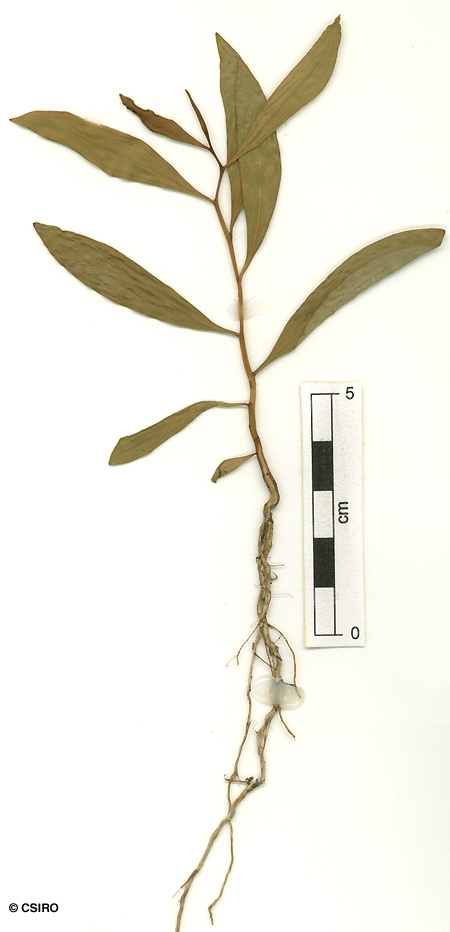Australian Tropical Rainforest Plants - Online edition
Melaleuca dealbata S.T.Blake




Blake, S.T. (1968) Contributions from the Queensland Herbarium 1: 41. Type: Northern Territory, ca 12 deg 40 S., ca 131 deg 25 E., Blake 17000; holo: BRI 044839.
Soapy Tea Tree; Tea Tree; Cloudy Tea Tree; Honey Tree; Melaleuca, White Leaf; Paperbark; White Leaf Melaleuca
Bark pale. Dead bark layered.
Leaf blades long and narrow (narrowly elliptic), about 6-12 x 1.5-2.3 cm, with 3-5 longitudinal veins more prominent than the rest. Young shoots and twigs densely clothed in white or silver, erect hairs.
Inflorescences about 15-20 mm wide. Flowers usually in threes. Stamens less than 10 mm long, +/- fused in five bundles opposite the petals.
Cotyledons obovate, about 2-3 x 0.5 mm. First pair of leaves about 4 x 2 mm, with numerous small oil dots visible with a lens. At the tenth leaf stage: leaf blade glabrous, about 35-40 x 7-10 mm, narrowly elliptic or narrowly obovate, apex apiculate; oil dots numerous, sometimes visible to the naked eye. Seed germination time 13 days.
A large tree sometimes grown in wetter areas of parks or as a street tree. Unfortunately the flowers have a rather foetid smell.





